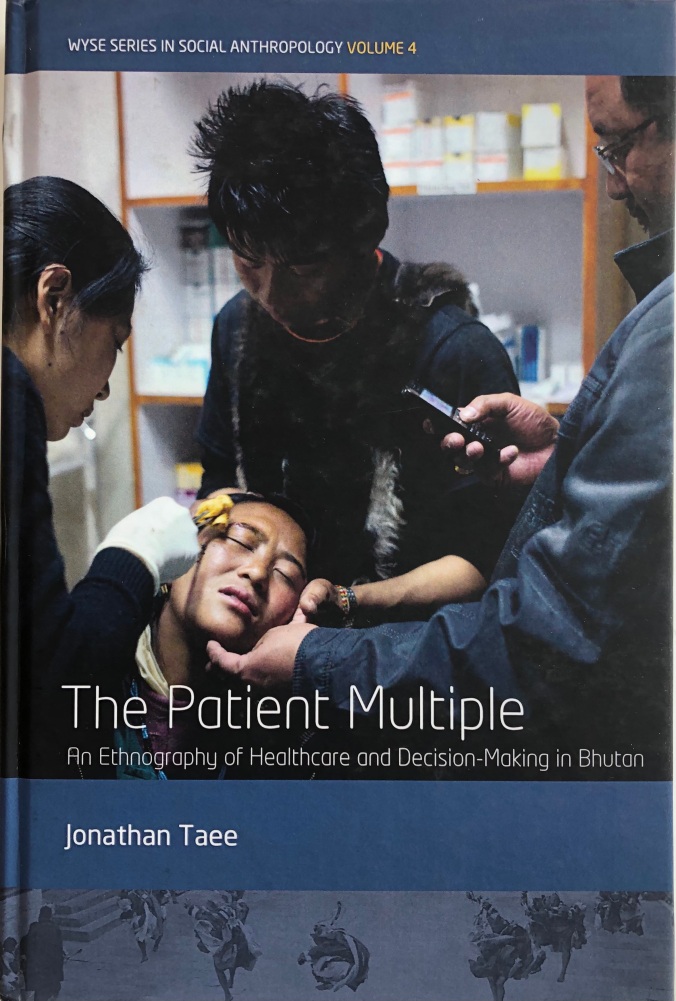
The Patient Multiple: An Ethnography of Healthcare and Decision-Making in Bhutan by Jonathan Taee (Berghahn Books, 2017). 220 pages.
In the Himalayan Kingdom of Bhutan, medical patients engage a variety of healing practices to seek cures for their ailments. Patients use the expanding biomedical network and a growing number of traditional healthcare units, while also seeking alternative practices, such as shamanism and other religious healing, or even more provocative practices. The Patient Multiple delves into this healthcare complexity in the context of patients’ daily lives and decision-making processes, showing how these unique mountain cultures are finding new paths to good health among a changing and multifaceted medical topography (from Amazon).

Democratic Transition in Bhutan: Political Contests as Moral Battles by Sonam Kinga (Routledge India, 2019). 292 Pages.
This book studies how a modern monarchy transformed Bhutan into a parliamentary democracy. A political ethnography, it focuses on the historic elections of 2007–2008, and studies democracy and its transformational processes from the ground up. It draws on historical as well as contemporary theories about kingship and regime change to analyse Bhutan’s nascent democratic process and reflect on the direction of political change, both at the state and local levels in the aftermath of the elections. It also presents insights into the electoral and political process by giving a first-hand account of the author’s own participation in the elections and ponders on the larger political implications of this election for the region. A strong theoretical discussion situated in robust fieldwork and personal experience, this book will be an essential read for scholars and researchers of politics, especially comparative politics and political institutions, South Asian and Himalayan Studies, political sociology and social anthropology.
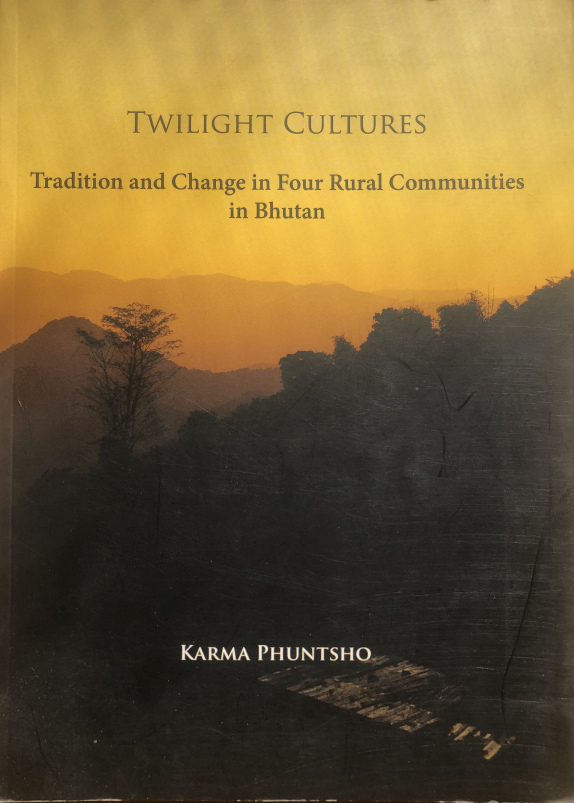
Twilight Cultures: Tradition and Change in Four Rural Communities in Bhutan edited by Karma Phuntsho (Thimphu: Shejun and Helvetas, 2015).
Bhutan is going through a rapid transition. From the spiritual ethos and beliefs which inform people’s worldview and mindset through behavior and lifestyle to natural landscape and economy. The ethnographic accounts in this collection document the traditional cultures of four remote communities in Bhutan – Nangla Trong, Lotokuchu, Lumbey and Khengkhar – and the challenges which confront them in the face of rapid modernization and globalism. The articles in this book capture the nostalgia, excitement, dilemma, and misgivings at a cultural crossroads.
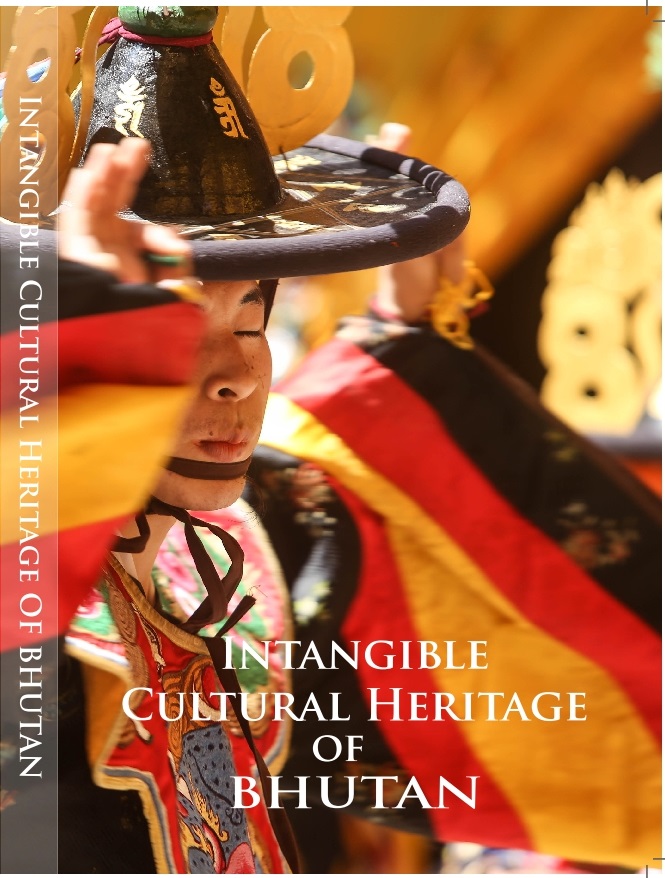
Intangible Cultural Heritage of Bhutan edited by Jagar Dorji (International Information and Networking Centre for Intangible Cultural Heritage in the Asia-Pacific Region & National Library and Archives of Bhutan, 2015).
The first chapter presents Bhutanese oral traditions, specifically traditions involving its languages and dialects, as well as proverbs, folk tales, legends and myths. Chapter Two details Bhutan’s performing arts and traditional games. In particular, it presents types of ritual mask dances, such as the tsun cham performed exclusively by monks and the boe cham performed solely by lay people, both dances inspired by Buddhism. This chapter also covers folk dances, court dances, folk-based modern songs and information about traditional musical instruments. Featured in the third chapter are traditional customs, rituals, ceremonies and festivals that exemplify the essence of Bhutanese traditions. The fourth chapter gives an account of folk knowledge and technology that has been handed down from generation to generation involving traditional medicinal practices, local healing practices, folk meteorology, astrology and astronomical knowledge, folk beliefs and superstitions. It also describes traditional houses, cuisines and beverages. The final chapter introduces a set of traditional Bhutanese crafts. Craftspeople specialized in 13 fields of art share their expertise, for example, in leather working, traditional boot-making, pottery and calligraphy, to name just a few.

Phallus: Crazy Wisdom from Bhutan by Karma Choden (Thimphu: Butter Lamp Publishers, 2013). 80 pages.
The book is an expression of author’s fascination for Phallic symbols and their significance. It challenges, scandalizes, and entices modern Bhutan. For the Bhutanese, the phallus protects, aids fertility, and challenges the human ego. It combines tradition with around 100 rare color photographs of the phallus from around Bhutan, across centuries. From naked dances that date back to pre-Buddhist animistic rituals to painted or carved phalluses in homes, stories of Bhutan’s engagement with the phallus shed light on traditions and lifestyle that make the country one of the happiest places on earth.
Resonance: Beyond the Words by Unni Wikan (Chicago: The University of Chicago Press, 2013). 344 pages.
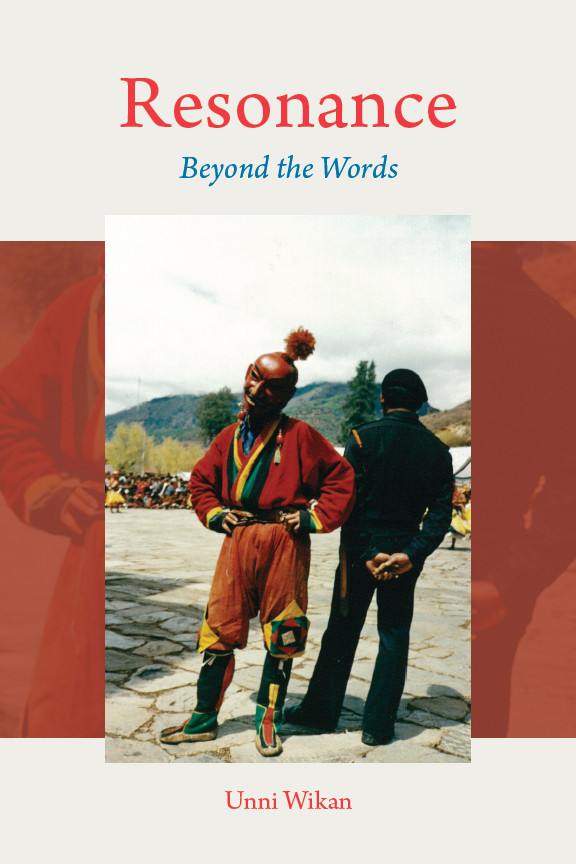
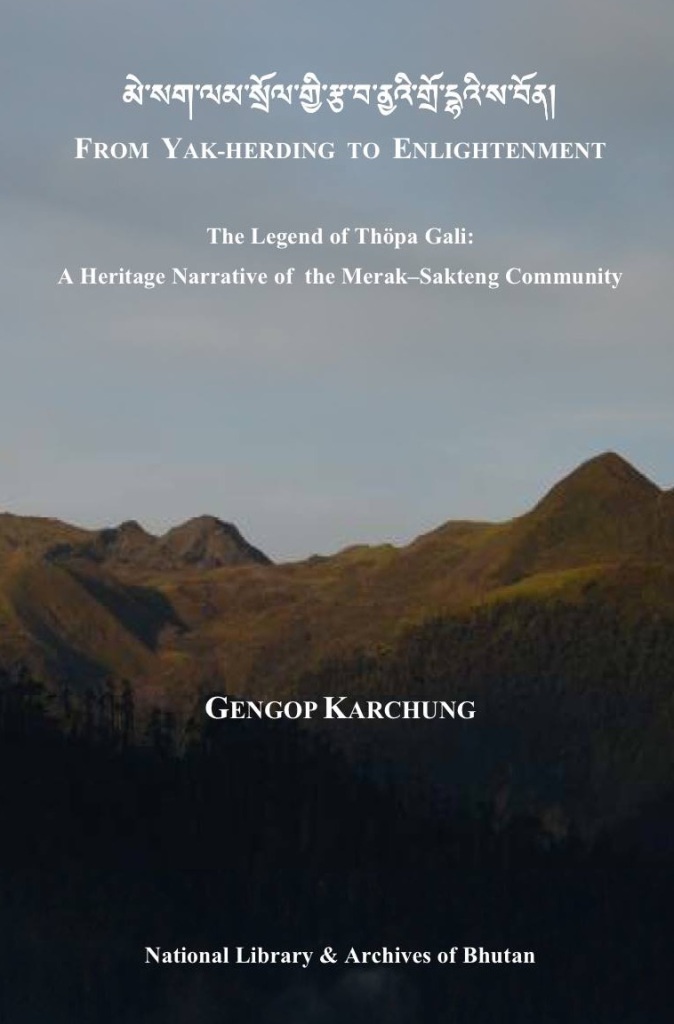
The Legend of Thöpa Gali: A Heritage Narrative of the Merak-Sakteng Community by Gengop Karchung (Thimphu: National Library and Achieves of Bhutan, 2013).
In The Legand of Thöpa Gali, Gengop Karchung presents both the original text and his English rendering of a popular tale of the nomadic communities of Merag, Sagteng, and Khaling Dawzor of the far eastern Bhutan. In this ethnographic legend, Thöpa Gali narrates an account of his discovery of a yak and becoming a professional nomad, different aspects of nomadism from tying the limbs of a yak while milking to tethering of a nomadic mastiff guard dog. Upon mastering the nomadic life, Thöpa Gali attains enlightenment.

The New Lamp Clarifying the History, Peoples, Languages and Traditions of Eastern Bhutan and Eastern Mo by Timotheus Bodt (Wageningen: Monpasang Publications, 2012).

The Conceptual Self in Context: Culture Experience Self-understanding edited by Ulric Neisser & David Jopling (Cambridge: Cambridge University Press, 2010). 296 pages.
In Chapter 4: ‘How is the self conceptualised? Variations among cultures’ (pp. 75-91) Fredrik Barth compares how self is conceptualized in Bhutan and the Baktaman tribe of New Gunea.

Les revenants de l’au-delà dans le monde tibétain by Françoise Pommaret (Paris: Éditions du CNRS. 2009). Read the article based on the book in English (Delok (‘das log), Women on the Fringes of Buddhism).

Bhutan: Ways of Knowing edited by Frank Rennie & Robin Mason (Charlotte, NC: Information Age Publishing, 2008). 304 pages.

Chilli and Cheese: Food and Society in Bhutan by Kunzang Choden (Bangkok: White Lotus, 2008). 307 pages.
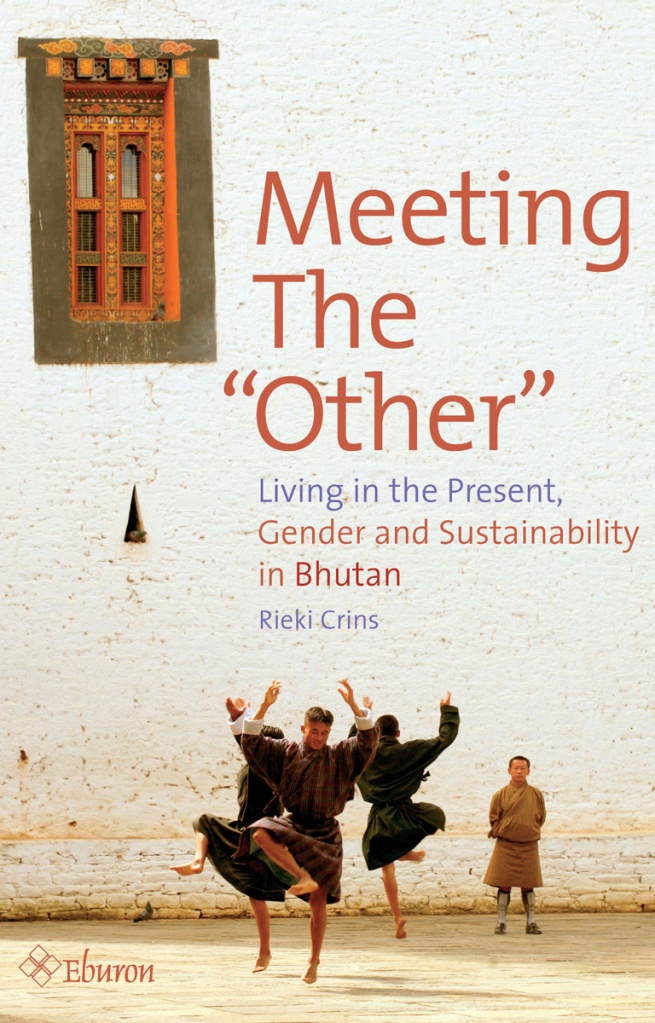
Meeting the “Other”: Living in the Present, Gender and Sustainability in Bhutan by Reiki Crins (University of Chicago Press, 2008). 200 pages.

Love, Courtship, and Marriage in Rural Bhutan: A Preliminary Ethnography of Wamling Village in Zhemgang by Dorji Penjore (Thimphu: Galing Printers and Publishers, 2009).

Flute of Diza: Marriage Customs and Practices Among the Brogpa of Merak and Sakteng by Tenzin Dorji, English translation by Sonam Kinga (Thimphu: Bhutan Times, 2008). 53 pages.
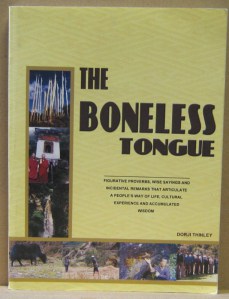
The Boneless Tongue: Figurative Proverbs, Wise Sayings, and Incidental Remarks that Articulate a People’s Way of Life, Cultural Experience and Accumulated Wisdom by Dorji Thinley (Samtse: Dorji Thinley, 2005). 257 pages.
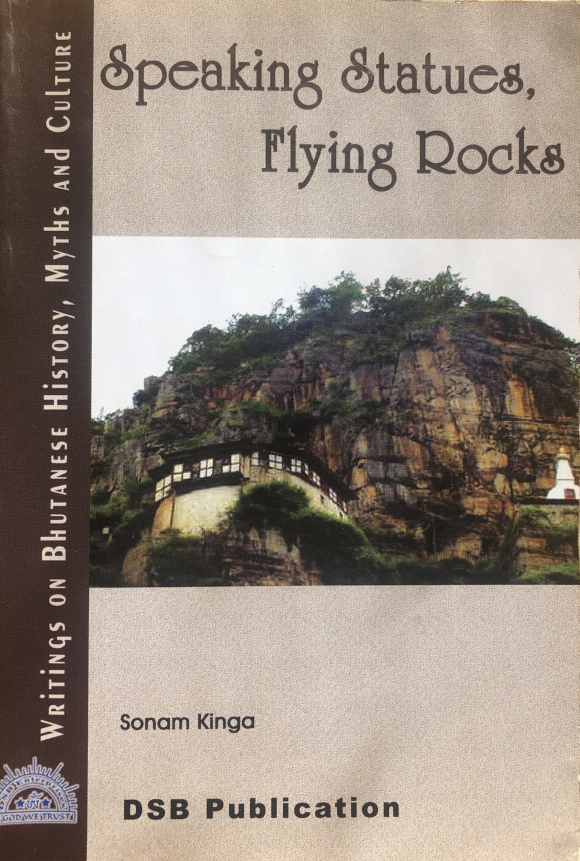
Speaking Statues, Flying Rocks: Writings on Bhutanese History, Myths and Culture by Sonam Kinga (Thimphu: DSB Publications, 2005). 198 pages.

Lhops (Doya) of Bhutan: An Ethnographic Account by Deben Sharma (New Delhi: Akansha Publishing House, 2005). 261 pages.
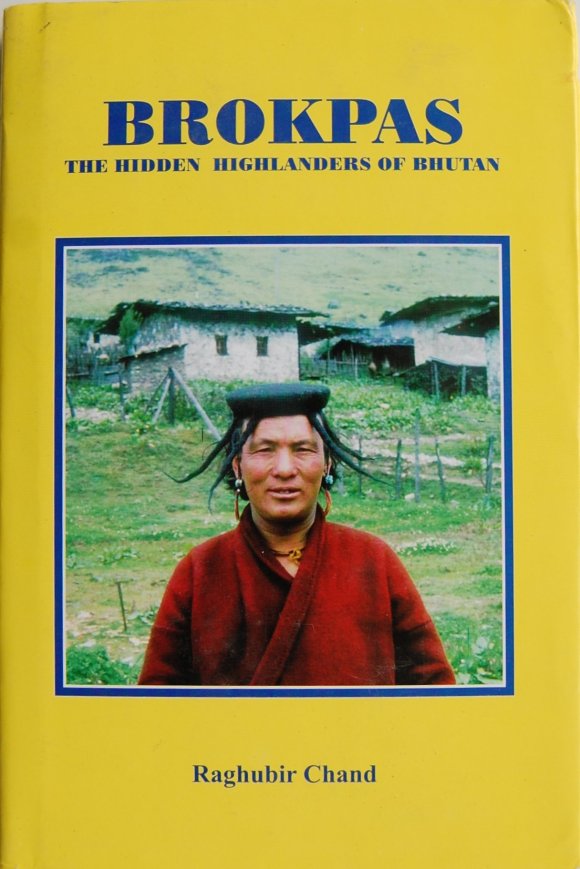
Brokpas: The Hidden Highlanders of Bhutan by Raghubir Chand (Nainital: People’s Association for Himalaya Area Research, 2004). 164 pages.
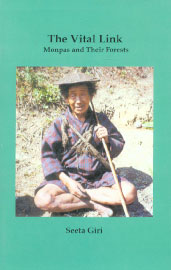
The Vital link – Monpas and Their Forests by Seeta Giri (Thimphu: Center for Bhutan Studies, 2004). 159 pages.
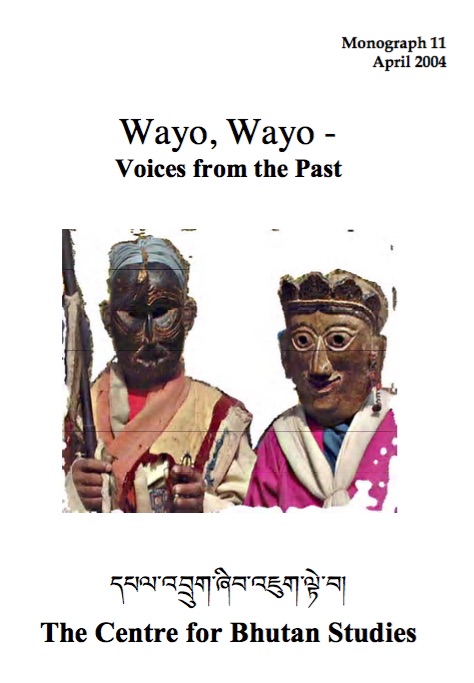
Wayo Wayo – Voices From the Past by Tashi Choden, Sonam Kinga, Dorji Penjore, Phuntsho Rapten, Karma Galay, Lham Dorji and Ugyen Pelgen (Thimphu: Center for Bhutan Studies, 2004). 145 pages.

Deities, Archers, and Planners in the Era of Decentralization by Karma Ura (Thimphu: Karma Ura, 2004). 323 pages.

Sergamathang Kothkin and other Bhutanese Marriage Customs by Lham Dorji (Monograph No 3. Center for Bhutan Studies, May 2003).

Lhop: A Tribal Community in South Western Bhutan and Its Survival Through Time by Jagar Dorji (Paro: Jagar Dorji, 2003). 65 pages.
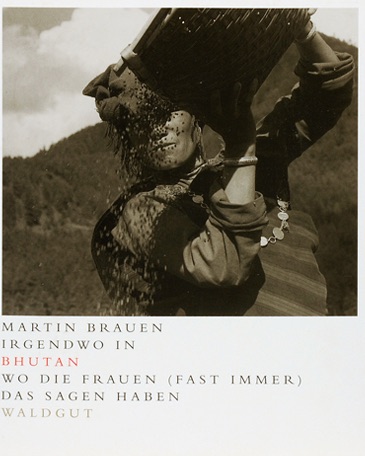
Irgendwo in Bhutan – Wo die Frauen (fast immer) das Sagen haben by Martin Brauen (Verlag im Waldgut in Zusammenarbeit mit dem Völkerkundemuseum der Universität Zürich, 1994). 176 pages, 119 photographs.

Situation of Children in Bhutan – An Anthropological Perspective by Fredrik Barth & Unni Wikan (Thimphu: Center for Bhutan Studies, 2011). 100 pages.
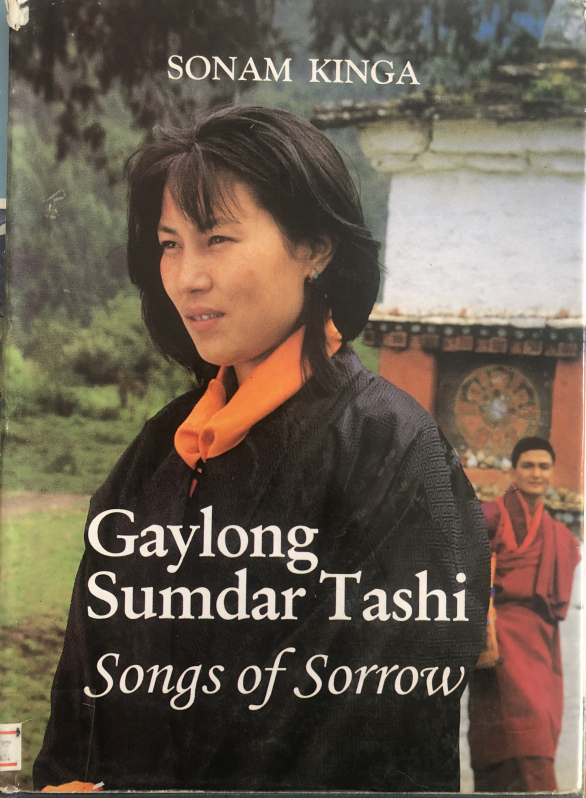
Gaylong Sumdar Tashi: Songs of Sorrow English translation of the lozey by Dasho Sonam Kinga, 1998).
Gaylong Sumdar Tashi, from Shar Nyishong in Wangdi Phodrang, was an ordinary peasant who was obliged to join the monkhood under an ecclesiastical decree issued during the reign of Deb (civil ruler) Sherub Wangchuk (reign 1744-1764). This was in fulfillment of a monastic arrangement which required a son in every family join the monk body. In this lozey (traditional oral ballad), Sumdar Tashi laments the tragic upheavals in his family which followed the decree. Leaving behind his mother, wife and son, he joins the novices from Shar, Wang and Paro on their way to Punakha, the seat of the Monk body. His narrative traverses the traditional highway that links Punakha Thimphu, as he joins the annual spring migration of the monk body to Thimphu. But he must return home on hearing about his mother’s illness. Her death provides him with a glimpse into the impermanence of life. The bitter fact that his wife and son abandoned his mother in her dire need compels him to renounce them. This decision frees him from the bonds of attachment to his family. He, of his own volition, then embraces the monastic order. These songs are externalization of the inner anguish and suffering of the narrator, caught between confliction loyalties. Besides being a non-hagiographic literary classic, the songs, in their own way, reflect the social mores and dictates of the times. They also capture with great sensitivity the colours and textures of everyday domestic life, of landscapes and seasons, even as they reveal with great poignancy Sumdar Tashi’s painful journey inward toward the resolution of his dilemma (from the introduction)
Lozey of Pemi Tshewang Tashi
This is the version published by Department of Education, and is different from the version read by Wangda Rinzin and recorded and broadcast by Bhutan Broadcasting Service.

The Ballad of Pemi Tshewang Tashi: A Wind Borne Feather English translation of the lozey by Dasho Karma Ura (1995, reprint 2011).
The Ballad of Pemi Tshewang Tashi is a virile translation into English of one of the most popular Bhutanese lozey. In this heroic tale, the chamberlain of the title recites how he has been ordered to lead a detachment to attack a foe of his master, although his own heart is not in the quarrel. He sets off with a premonition of disaster, but puts loyalty to his lord above personal presentiments. He reflects with wistfulness and passion on the landscape and persons he is leaving behind. After the battle, he is cornered and trapped by forced of his adversary at the formidable cliff at Thomangdrak near Trongsa. As well as dwelling on notable features of the landscape of western and central Bhutan, the ballad reminds the reader of the romance and hardship of travel in the past and also of the nature of virtues such as courage and obedience. Technically, the translator has demonstrated a masterful control of the metre and rhythm of this orally-transmitted tale. In his lucid introduction he observes how the popularity of this particular lozey has fortunately ensured its survival over a hundred years.